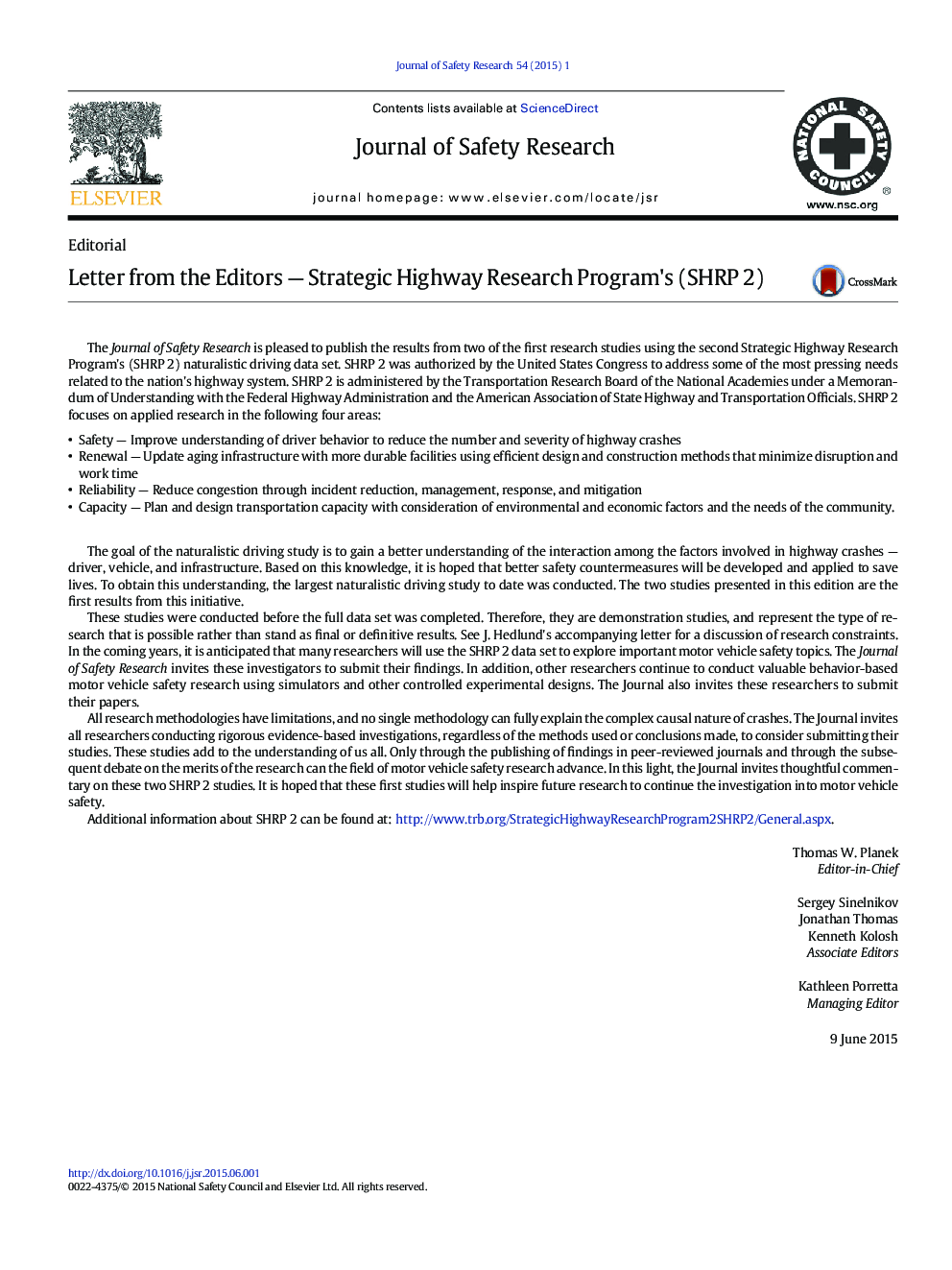| کد مقاله | کد نشریه | سال انتشار | مقاله انگلیسی | نسخه تمام متن |
|---|---|---|---|---|
| 587283 | 1453306 | 2015 | 15 صفحه PDF | دانلود رایگان |
• This paper provides guidance for implementing offset left-turn lanes at intersections where permissive or uncontrolled left turns take place.
• The SHRP 2 Naturalistic Driving Study data were used as an innovative alternative to traditional data collection for this research effort.
• This study used critical gap length, post-encroachment time, near crash events, and avoidance maneuvers as safety surrogates.
• The research results indicate that positive-offset left-turn lanes reduce the likelihood of sight obstruction for left-turning drivers.
• Drivers are more likely to have very short post-encroachment times at negatively-offset opposing left-turn lanes, which may be a safety concern.
IntroductionThe Strategic Highway Research Program 2 (SHRP 2) Naturalistic Driving Study (NDS) data were used to evaluate gap acceptance behavior of drivers at left-turn lanes with negative, zero, or positive offsets ranging from − 29 ft to + 6 ft. The objectives of the study were to develop guidance for the design of offset left-turn lanes used as a safety countermeasure, and to provide insight regarding the use of the NDS data to future users.MethodThe study included 3350 gaps in opposing traffic evaluated by 145 NDS volunteer drivers and 275 non-NDS drivers at 14 two-way stop-controlled intersections and 44 signalized opposing left-turn pairs. Logistic regression was used to model the critical gap length for drivers as a function of offset, under conditions when their view was either blocked or not by an opposing left-turning driver.ResultsThe analysis found that the critical gap was longer at left-turn lanes with negative offsets than at those with zero or positive offsets, and was also longer when sight distance was blocked by an opposing left-turning vehicle. Sight distance was much more likely to be restricted by an opposing left-turning vehicle at negative-offset and drivers at those intersections were less likely to accept a gap when an opposing left-turn driver was present.ConclusionsLonger gap lengths could potentially result in decreased operational efficiency of an intersection. In addition, drivers making left-turns at negative-offset left-turn lanes are, on average, more likely to leave the shortest amount of time between their turn and the arrival of the next opposing through-vehicle, which may present a potential safety concern.Practical applicationsThe findings provide guidance for highway designers considering using offset left-turn lanes as a crash countermeasure. This research also highlights the benefits and limitations of using the SHRP 2 NDS data to answer similar research questions.
Journal: Journal of Safety Research - Volume 54, September 2015, Pages 5.e1–15
